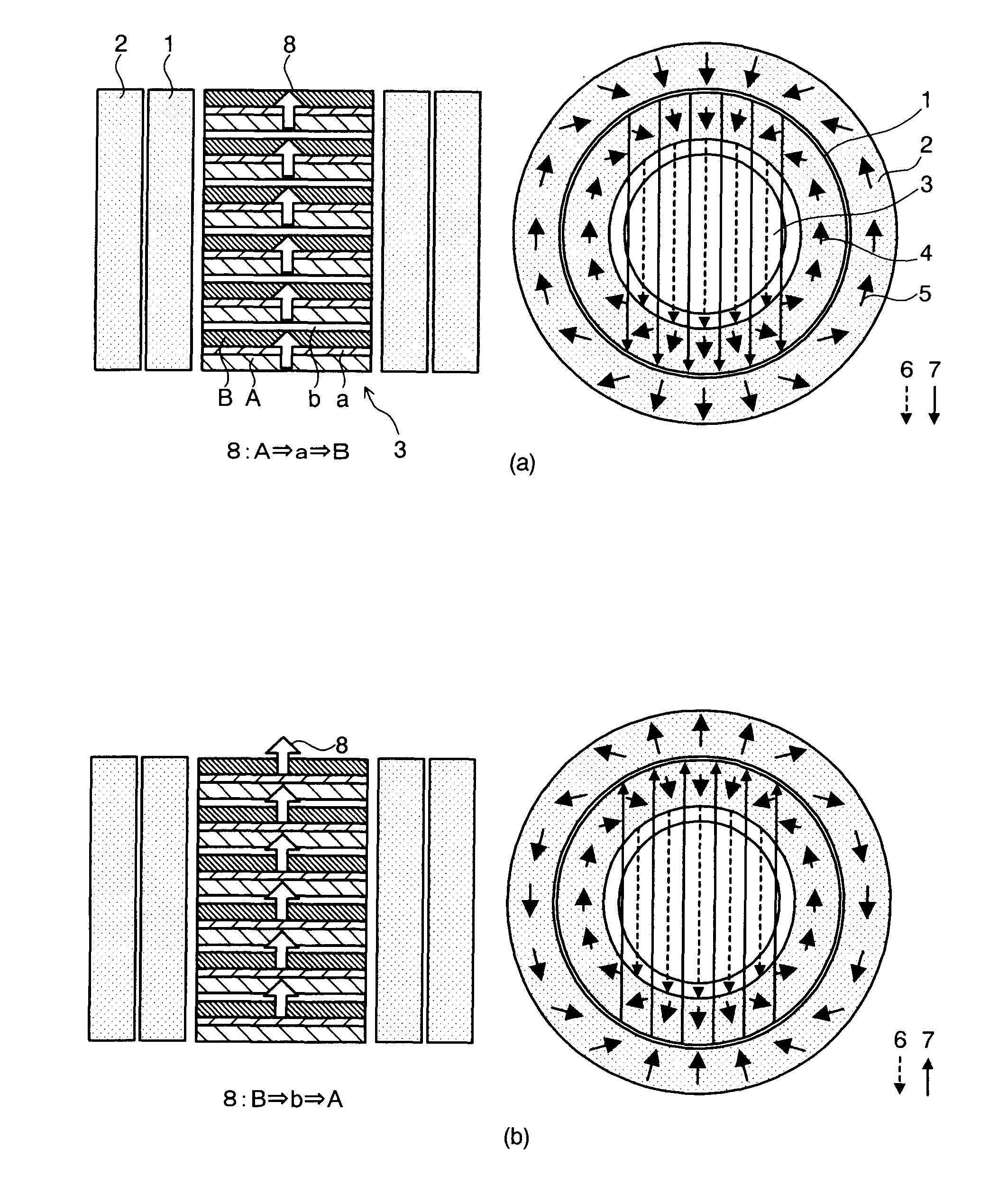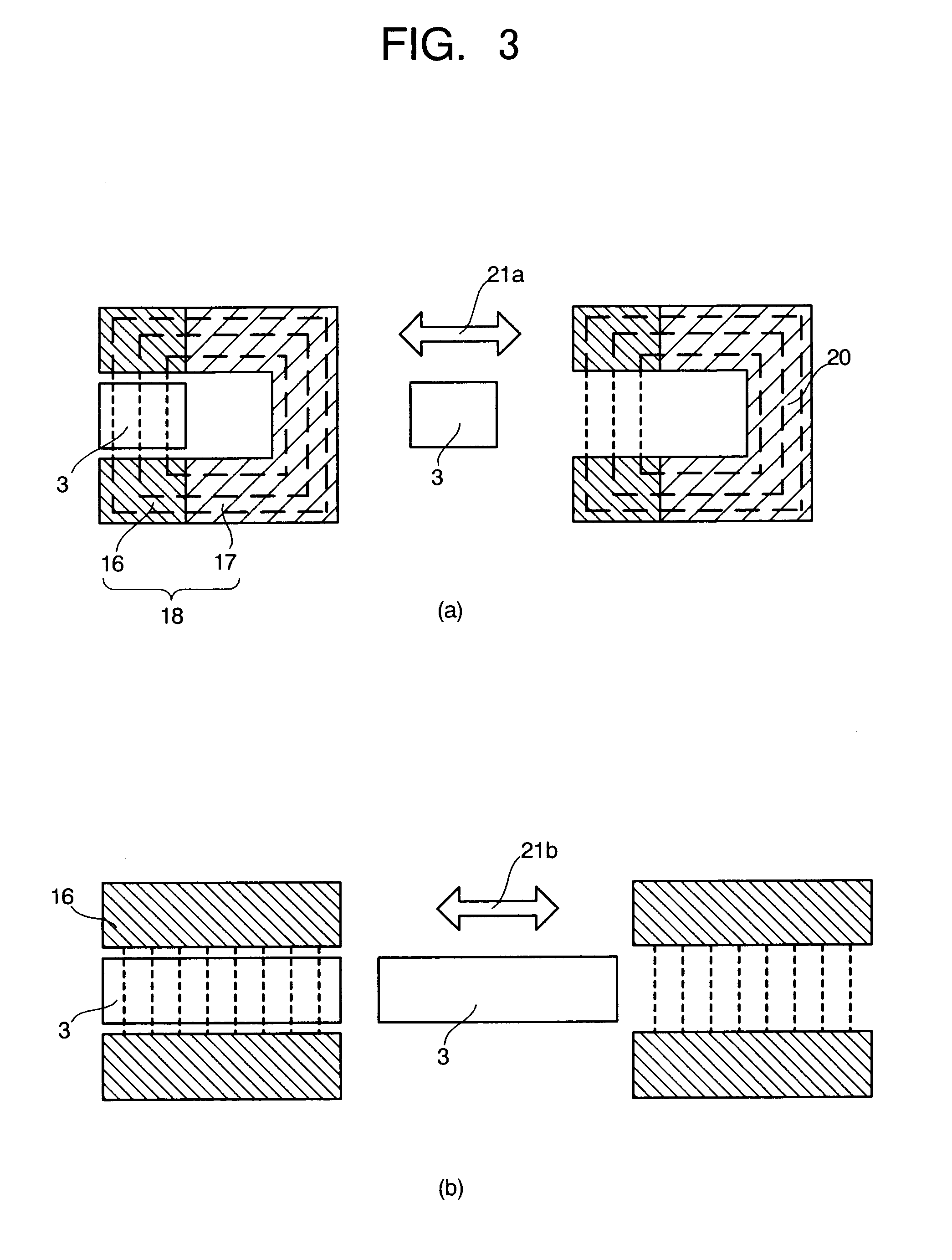Magnetic refrigerating device and magnetic refrigerating method
a magnetic refrigeration and refrigerating device technology, applied in the direction of magnets, magnet bodies, lighting and heating apparatus, etc., can solve the problems of ozone layer destruction or global warming, high operation cost, and large size of magnetic refrigeration systems,
- Summary
- Abstract
- Description
- Claims
- Application Information
AI Technical Summary
Benefits of technology
Problems solved by technology
Method used
Image
Examples
Embodiment Construction
[0057]Hereinafter, the present invention will be described in detail with reference to the drawings.
[0058]FIG. 1 is a schematic view illustrating the magnetic refrigerating device according to an embodiment of the present invention. FIGS. 2 and 3 are structural views illustrating concrete embodiments relating to the magnetic refrigerating device in FIG. 1, respectively. FIG. 4 is an explanatory view for the magnetic refrigerating heat cycle in the magnetic refrigerating device in FIG. 1. Herein, FIG. 2 is a perspective view illustrating the concrete embodiment of the magnetic refrigerating device in this embodiment.
[0059]Like or corresponding components are designated by the same reference numerals throughout the drawings.
[0060]In FIG. 1, a magnetic refrigerating unit 3 of the magnetic refrigerating device in this embodiment is composed of magnetic materials “A” and “B” and heat conductive materials “a” and “b”. The magnetic material “A” exhibits the magneto-caloric effect that the ...
PUM
| Property | Measurement | Unit |
|---|---|---|
| diameter | aaaaa | aaaaa |
| magnetic field | aaaaa | aaaaa |
| temperature | aaaaa | aaaaa |
Abstract
Description
Claims
Application Information
 Login to View More
Login to View More - R&D
- Intellectual Property
- Life Sciences
- Materials
- Tech Scout
- Unparalleled Data Quality
- Higher Quality Content
- 60% Fewer Hallucinations
Browse by: Latest US Patents, China's latest patents, Technical Efficacy Thesaurus, Application Domain, Technology Topic, Popular Technical Reports.
© 2025 PatSnap. All rights reserved.Legal|Privacy policy|Modern Slavery Act Transparency Statement|Sitemap|About US| Contact US: help@patsnap.com



